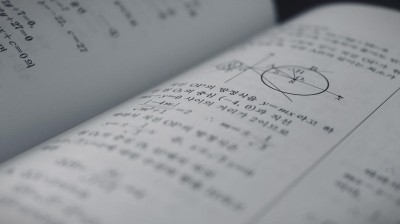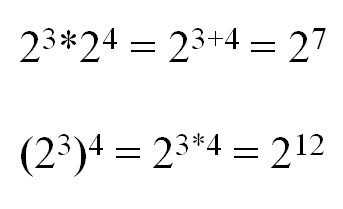You’ve likely heard of the disorder dyslexia – you may even know someone who struggles with it. Just as some people have a learning disability that affects reading, others have a learning disability that affects math. This disorder is called dyscalculia.

People with dyscalculia have trouble processing numbers and math related concepts. Dyscalculia affects the part of the brain that helps with math and number sense. (Source: my.clevelandclinic.org)
Let’s answer several questions about dyscalculia.
1. What is the difference between dyscalculia and dyslexia?
Both are learning disorders. Dyscalculia affects math learning. Dyslexia affects a person’s ability to read.

The two disorders are categorized as specific learning disorders. A person could even have both disorders. Keep in mind that neither disorder determines a person’s intelligence!
One of the most famous people known to have dyslexia is Albert Einstein, the renowned physicist who developed the theory of relativity and made great contributions to quantum mechanics.
Dyscalculia is a newer diagnosable condition but it’s thought that Benjamin Franklin, one of our founding fathers, suffered from dyscalculia! At this point, dyscalculia isn’t as well understood as dyslexia and more research needs to be done. (Source: idlsgroup.com)
2. What are the symptoms of dyscalculia?
The symptoms of dyscalculia vary depending on the person’s age. In preschool, early symptoms of dyscalculia include problems with counting, skipping over numbers when counting, difficulty recognizing patterns, and not understanding symbols like the number 2.
In elementary school, students may not understand basic math facts like 2 + 3 = 5 or they may not be able to understand the difference between the math symbol + for addition and x for multiplication.

They also have trouble memorizing basic math facts. At this age, students with dyscalculia may use their fingers to count even for the simplest math calculations, when other students have moved beyond finger counting.
Young children may also struggle with number sense. They won’t comprehend that the number 5 is greater than the number 2.
At the secondary level, students with the disorder may exhibit difficulties counting money and making change. Or they may have trouble measuring things.
They may not understand the logic behind math. They may even avoid situations that involve math. (Source: brylanadvocates.com)
Students with dyscalculia may experience stress and anxiety, especially if the condition isn’t being treated. They can even be embarrassed about it and avoid situations that involve numbers or math.
Once the condition is identified, it’s important to treat not just the condition but also the anxiety that’s associated with it.
3. How is dyscalculia diagnosed?
As with other learning disabilities, an evaluation needs to be performed in order to obtain a diagnosis of dyscalculia. The evaluation will depend on the person’s age. Schools offer the evaluations free of charge though some families opt to have a specialist outside of the school conduct the evaluation.
If you’re a parent and suspect that your child may have dyscalculia, speak to the educators and guidance counselors at the school so your child can be tested. You can also speak to your child’s primary care physician who can guide you in the process.
Along with a specific test to diagnose dyscalculia, general intelligence tests are performed as well. Sometimes, students with one learning disability may have a disability in another area as well, hence the reason the evaluation is comprehensive.
The results will show strengths and weaknesses and will help families decide on a course of action. Once the evaluation is complete, educators, specialists, and the family can develop a plan to help the learner.
A diagnosis of dyscalculia may mean the student will qualify for an IEP (Individualized Education Program) so the student can receive special education services and extra help in math. (Source: kidshealth.org)
4. Is there a cure for dyscalculia?
Unfortunately, there currently isn’t a cure for dyscalculia though there are treatment options available. The goal of such treatments is to give students the tools to cope with the disorder in school and throughout life as well as give them opportunities to succeed in math.
As such, the earlier that a person is identified with the disorder, the better, so that students can make progress in math and improve their skills. If a person isn’t diagnosed until adulthood, they will probably have more issues in their jobs and in life than those who were diagnosed as a young child and received consistent support and treatments.
5. What are some accommodations that can help students with dyscalculia?
Educators can help students with dyscalculia succeed in the classroom by providing accommodations such as the following:
- Provide a formula sheet for tests
- Allow students to use a calculator
- Give extra time on quizzes and tests
- Provide tutoring assistance in school
- Breakdown worksheets into large spaces so students have plenty of space to work
- Highlight key words in word problems
- Teach students to “self talk” through problems
- Use graphic organizers to help
- Consistently review old concepts before introducing new concepts
- Give students stey-by-step instructions and have the students repeat back the instructions

(Sources: understood.org and brylanadvocates.com)
6. What are the causes of dyscalculia?
It’s not exactly known what causes dyscalculia though there has been some research suggesting that it could be related to the following:
- Genes and heredity – Dyscalculia tends to run in families. Current research shows that genetics may also play a part in problems with math.
- Differences in brain development – Researchers have used brain imaging to compare those people with the disorder to those without. They have noticed there are differences in the brain for those with the disorder. They observed “a difference in the gray matter, surface area, thickness, volume of parts of the brain that are associated with learning, memory and cognitive capacities.” (Source: mgiep.unesco.org)
- Environmental factors – Some research has shown that babies who were exposed to alcohol in the womb can be more at risk for dyscalculia. Premature babies and those with low birth weights can also be at higher risk for dyscalculia.
- Brain injury: Some studies have shown that brain injuries to certain parts of the brain can cause the condition known as acquired dyscalculia.

7. Are there any upsides to having dyscalculia?
Learning disorders can be challenging for students and their families. Math tasks that may seem easy to some students can be extremely difficult and frustrating for students with dyscalculia.
But the news isn’t all bad. Because of the difference in learning styles among dyscalculia learners, it is thought that students with dyscalculia may have great strengths in other areas. Let’s look at some examples.
- They may be more creative and have a great imagination.
- They often excel at reading and writing and tend to be excellent with words.
- They tend to be more intuitive learners than others.
- They are fast problem solvers. Since they think differently, they can often figure out solutions to problems quickly and creatively.
8. What types of jobs or careers can a student with dyscalculia excel in?
Because of the strengths that people with dyscalculia have, they tend to do well in certain types of jobs. They tend to like jobs with a lot of variety, social interaction, and creativity. They excel in jobs that are hands-on. Linkedin.com suggests the following careers:
- Applied arts such as graphic design, interior design, photography, animation, or visual communication
- Media careers – digital marketer, social media marketer, film direction, content writer, blogger, public relations, journalist
- Performing arts – singing, acting, DJ, choreography, comedy
- Sales and marketing
- Human Resources management
- Travel industry – tour guide, travel management

Keep in mind that just because a student has trouble with math does not automatically indicate dyscalculia! There are lots of other possibilities – for some students, math anxiety is a very real thing.
Some students freeze up on math tests because of anxiety and perform poorly as a result – this does not mean they have dyscalculia. Sometimes students with ADHD can be misdiagnosed as also having dyscalculia.
Students with ADHD, because of a lack of attention to detail, can make math mistakes, raising a flag to educators that it could be dyscalculia. Once ADHD is under control, it makes sense to reevaluate the particular learner’s math skills. (Source: mgiep.unesco.org)
Just remember, there is a lot of hope for students with dyscalculia! Once the disorder is identified, the appropriate modifications can be made to help students achieve math success, catch up to their peers, and find success in school and beyond!
If you are having trouble with the SAT math section, check out this article for help on some of the topics covered on the test.
You can learn about some reasons to hire a math tutor here.
I hope you found this article helpful. If so, please share it with someone who can use the information.
Don’t forget to subscribe to our YouTube channel & get updates on new math videos!
About the author:
Jean-Marie Gard is an independent math teacher and tutor based in Massachusetts. You can get in touch with Jean-Marie at https://testpreptoday.com/.



